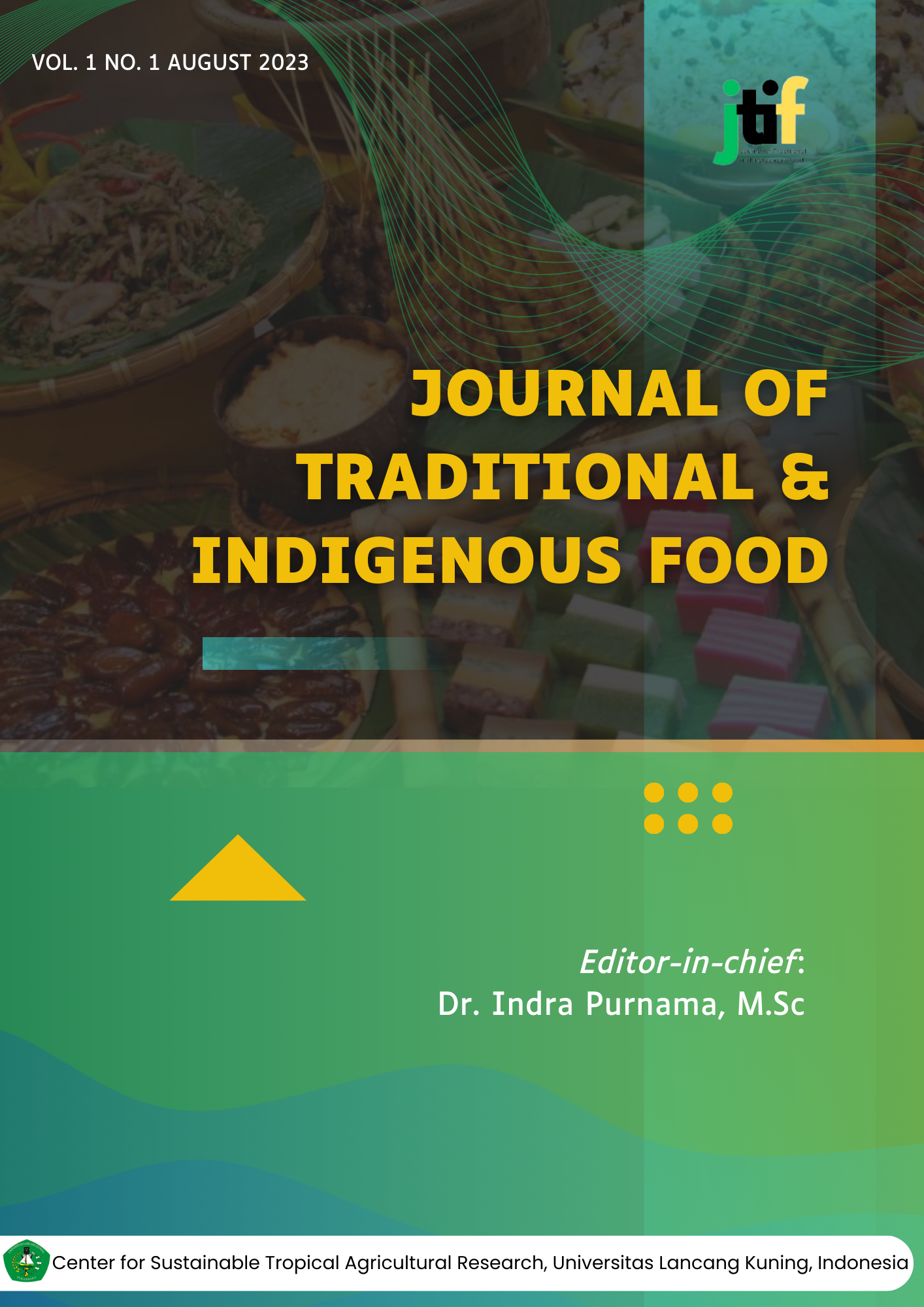Enhancing Vitamin C Retention in Edible-Coated Cherry Tomatoes using Parijoto Extract: A Potential Approach for Traditional Food Preservation
Main Article Content
Abstract
Medinilla speciosa Blume, commonly known as Parijoto, harbors anthocyanin compounds of interest, aligning with traditional and indigenous food preservation practices. The efficacy of edible coatings, integral to preserving traditional foodstuffs, assumes significance. This study, aligned with the ethos of the Journal of Traditional and Indigenous Food, aimed to juxtapose vitamin C profiles in cherry tomatoes encapsulated in edible coatings fortified with Parijoto extract, unfortified coatings, and unpackaged counterparts. Anthocyanin content in Parijoto extract was quantified through UV-Vis spectrophotometry, aligning with traditional analytical methods. Vitamin C levels were evaluated using titration, adhering to indigenous food knowledge. Results unveiled an anthocyanin content of 0.05065% w/w or 0.5065 mg/g in the Parijoto extract. Vitamin C levels (%w/w) were assessed on the 4th, 6th, and 10th days, with indigenous perspectives on preservation informing the study duration. Cherry tomatoes coated with Parijoto extract exhibited vitamin C levels of 0.31%, 0.30%, and 0.29% across storage intervals, echoing the integration of traditional practices with contemporary research. Unfortified edible coatings showed 0.34%, 0.31%, and 0.27%. Notably, unpackaged tomatoes declined vitamin C, accentuating the significance of preservation practices.
